A survivor of the September 2010 Christchurch earthquake — after a bookcase fell onto it — this lovely Triumph (once owned by famed Kiwi motorcycle designer, John Britten) emerged undamaged from that tragic day
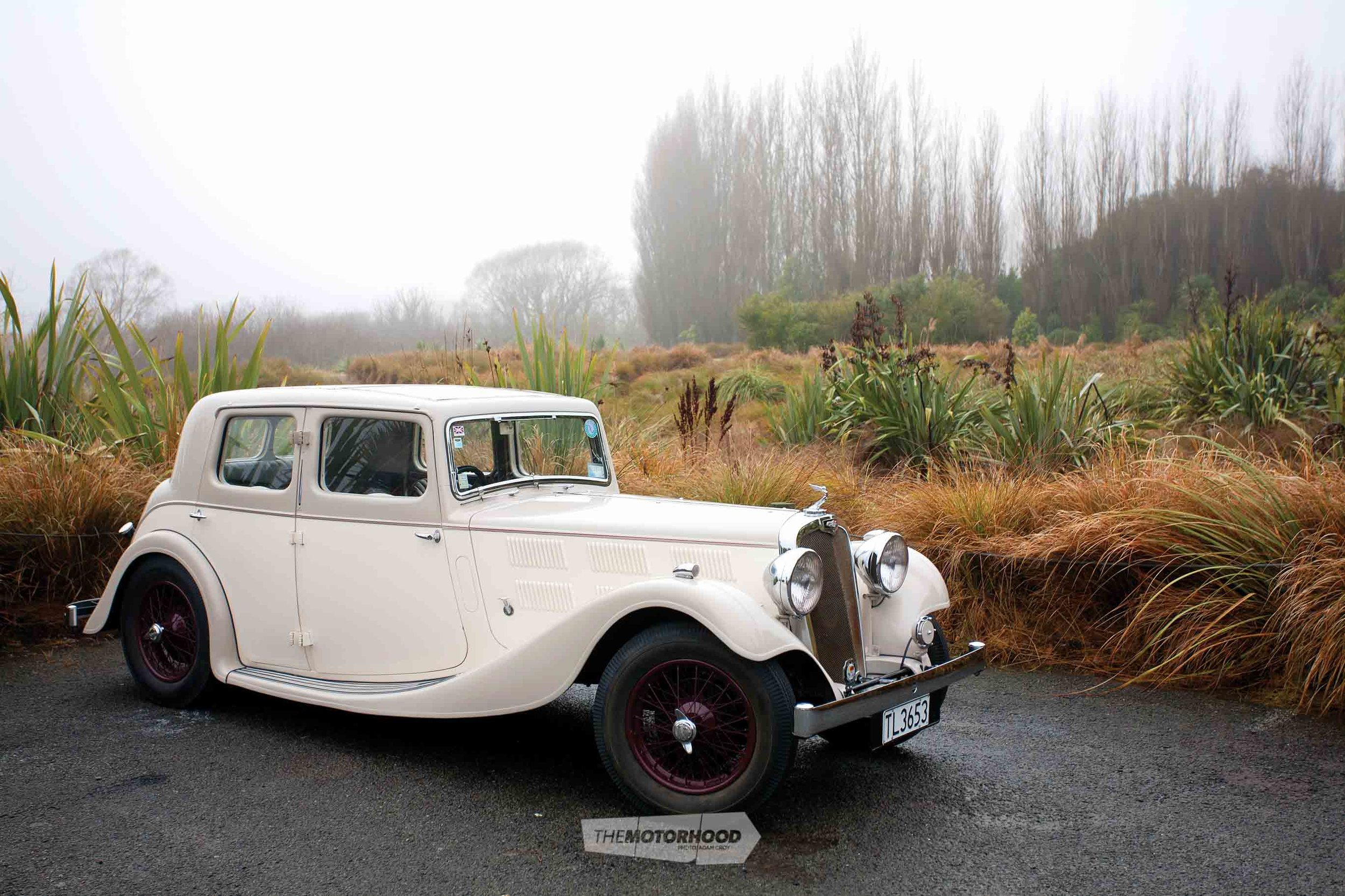
In the aftermath of the tragic and devastating events that took place in Canterbury in 2010 and 2011, the generosity, kindness and help shown to us by the classic car enthusiasts we visited during our South Island trip pleasantly surprised us. Despite the obvious issues facing the people visited, we felt privileged that they were able to take a while out of their busy schedules and spend time with us to talk about their classics cars.
Even though the weather wasn’t terribly kind, nothing was too much effort for people such as Philip Redmond, the owner of this superbly restored 1935 Triumph Gloria Six. Philip braved a real pea-souper fog and chilly conditions long enough for us to snap some amazing photographs.
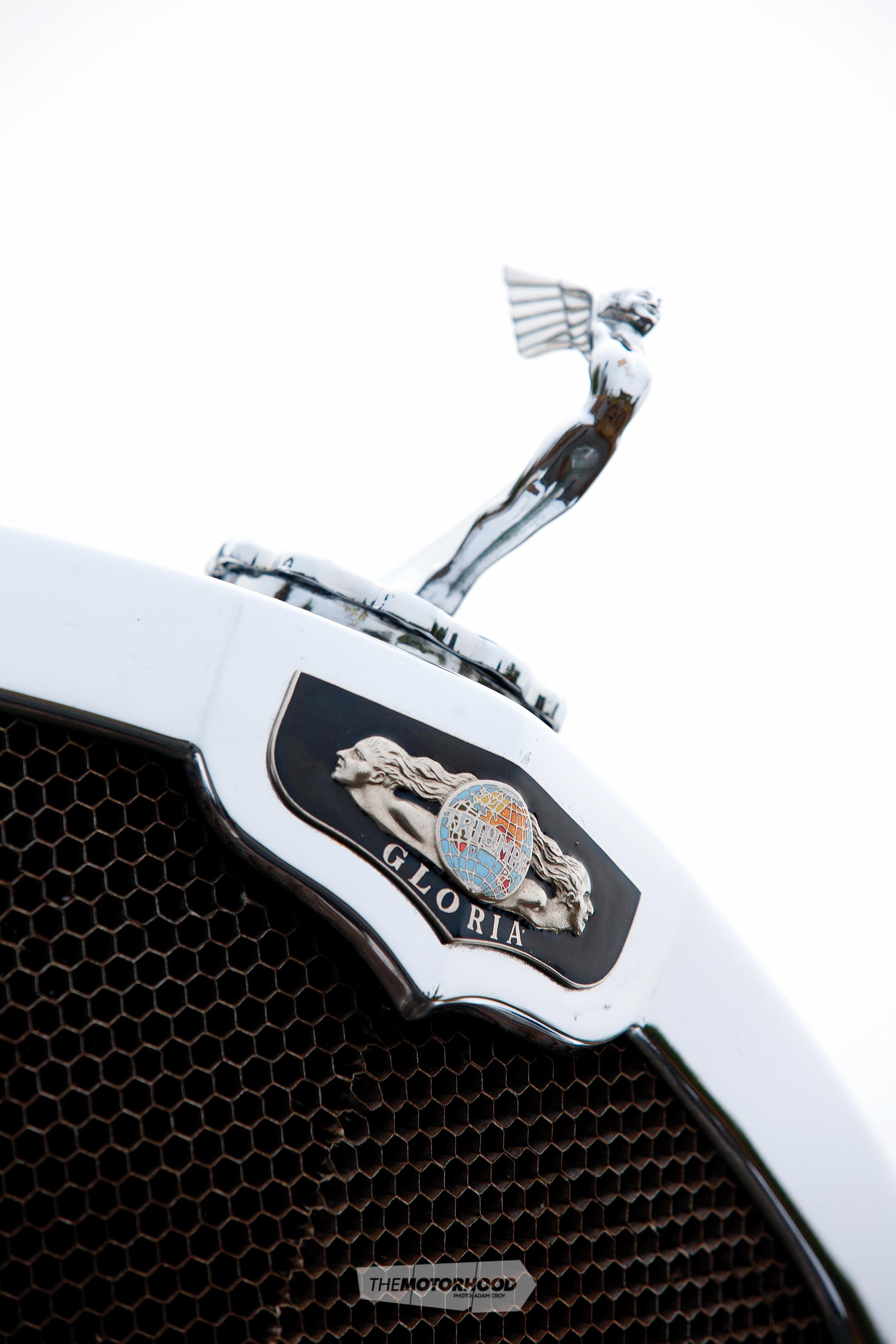
Classic Car Law
Philip’s interest in cars spans back many years, as well as his association within the motor industry in general. He has been an active member of the Canterbury Rover Car Club for about 35 years and also a member of the Jaguar Drivers’ Club just short of that period.
Philip’s interest has primarily been with British cars and he’s alternated between owning Jaguars and Rovers as everyday transport for many years – including an XJ6 Jaguar, Rover SD1, Rover 2000TC and, currently, a late-model S-Type Jaguar. Philip also owns a fully restored 1964 Daimler V8, a car he’s owned for over three years.
Philip’s active club membership extends to being the honorary solicitor for the Jaguar Drivers’ Club as well as for the Daimler and Lanchester Owners’ Club of New Zealand and, formerly, their spare parts division for over 30 years. His skills as a lawyer have been invaluable to these clubs over the years, especially when dealing with incorporated societies.
An Investment
It was Philip’s son, James, who first spotted this fabulous Triumph Gloria Six for sale in Fazazz’s motoring emporium in Christchurch – a place that Philip has usually tried to visit, and over the years he has bought and sold several cars from Fazazz. The latest is this 1935 Triumph Gloria Six. The car certainly appealed to Philip because of its British heritage and the fact that Auto Restorations in Christchurch had carried out a superb nut-and-bolt restoration of the Triumph between 1990 and 1995. More importantly, Philip was drawn to this car because a famous New Zealander, the late John Britten, previously owned it.
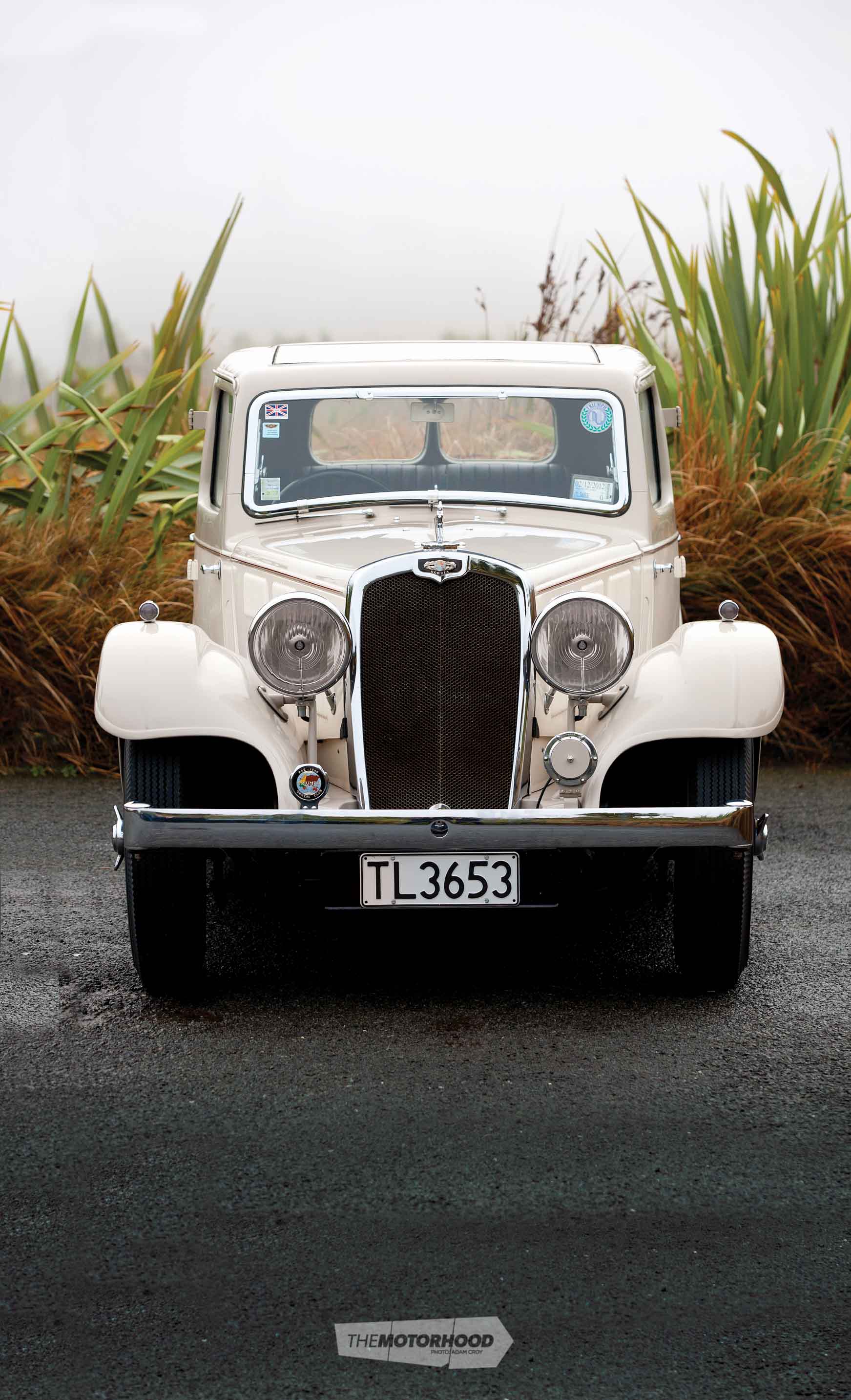
John Britten became virtually a household name when he started designing motorcycles, and developed the Britten V1000 using his own design and construction techniques to produce a faster, lighter superbike. After years of mixed success, Andrew Stroud won the world individual BEARS championship in 1995 riding a Britten bike. This connection to Britten, along with the car’s individual virtues, provided all the necessary attractions for Philip – although he knew a purchase would be more along the lines of an investment rather than a cheap buy. Either way, only after months of negotiating did Philip eventually become the proud owner of this Gloria Six.
Apparently the Triumph had also attracted keen interest from Australia and, at one point, seemed destined to leave our shores until the overseas finance fell through, leaving Philip to clinch the deal. Since that time, he has received plenty of positive feedback from pre-1940 Triumph owners and other vintage car club members, all of them pleased the car had stayed in New Zealand, particularly Christchurch, and not been exported.
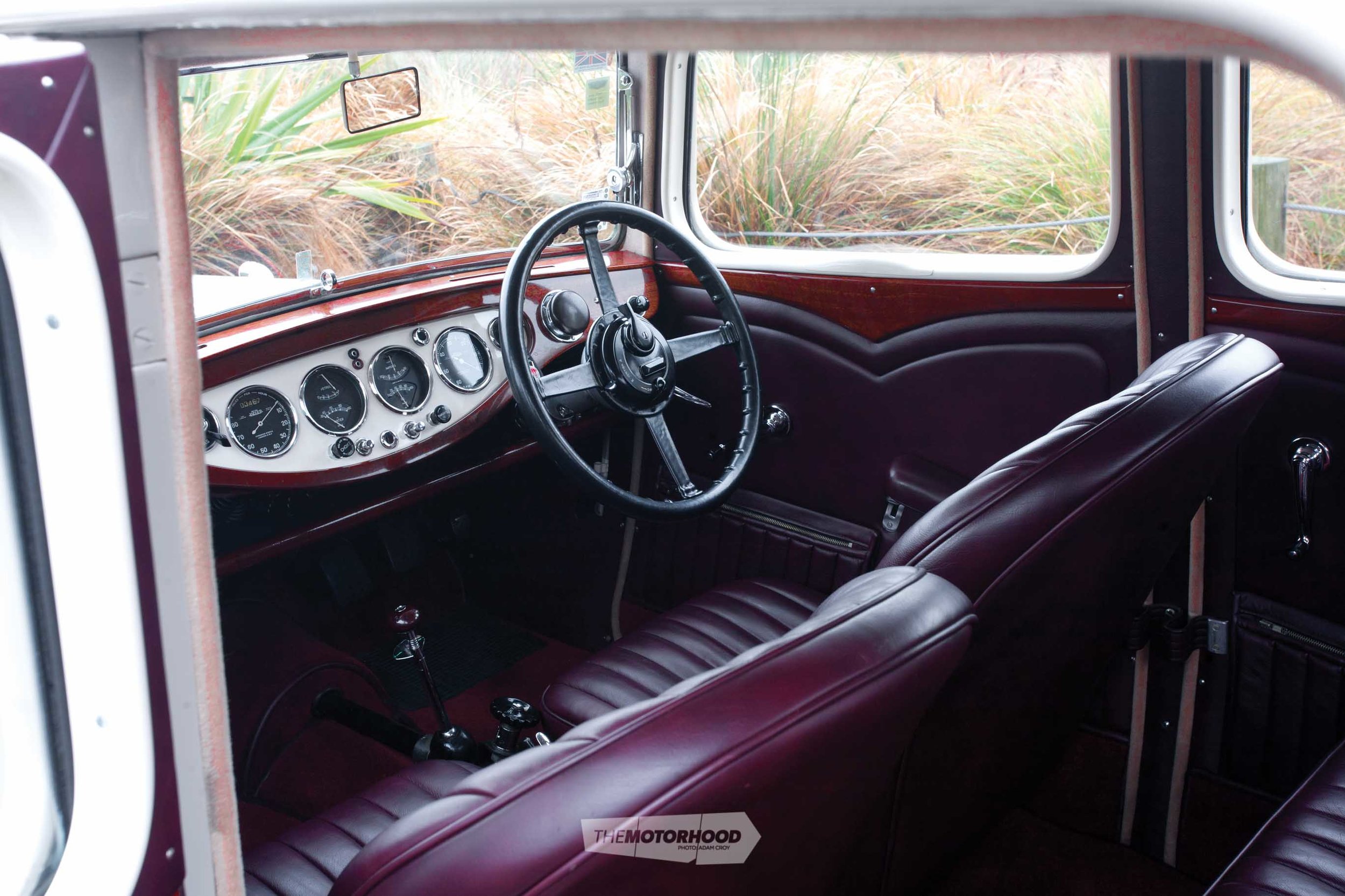
Chequered History
Philip has been extremely happy with the car in every respect, and says it’s lovely to drive. The steering and performance is excellent, the latter thanks to the 1991cc six-cylinder Coventry-Climax engine mated to a four-speed manual gearbox with free-wheel.
Philip’s research shows the car was first registered in Wellington in 1935, and it is thought to be one of two purchased by a company as sales rep cars. If this is true, then Philip believes the twin vehicle is currently in Oamaru and owned by Derek Atkinson, who has restored the chassis and is in the process of building a new body, as the original was too far gone for restoration.
A Wellingtonian, Walter Panton, then purchased our featured Triumph shortly after World War II. Philip believes Walter was a draughtsman who one day came home with this Triumph Gloria having traded in a relatively new Morris or Austin sedan. After subsequent discussions with Walter’s family, Philip learned he certainly wasn’t in the best of favour after arriving home in the Triumph, nevertheless, the family owned the car for a considerable number of years. Walter moved to Timaru around 1958, taking the car with him, and continuing to use it as his everyday transport. Philip also learned the Panton family spent many of its Christmas holidays traveling around the South Island and, in particular, the West Coast.

The Triumph was painted grey in those days, and subsequently clocked up many enjoyable kilometres. Walter Panton was somewhat of a DIYer, according to Philip, and he told us of one story he learned from the family concerning the time Walter had managed to fabricate a baked bean tin into a brake fluid reservoir – a necessary undertaking, as Triumph parts were probably almost unobtainable back then. Philip assures us the baked bean reservoir is no longer on the car. During Philip’s conversation with the Panton family, he also discovered that at least one of the three Panton children learned to drive in the Triumph, and all still had fond recollections of the car. In fact, more recently they visited Philip to look at it. At that stage, Mrs Panton was 87 years old and living in the North Island.
Best of Britten
Back in about 1968 a young John Britten, then a pupil at St Andrews College, decided to purchase this Triumph Gloria Six. Interestingly, Philip still has a letter from Walter Panton that is addressed to Britten. Originally enclosed with the letter – in which Walter wished the car’s new owner a safe journey home – were the Triumph’s ownership papers.
Philip believes that Britten did, in fact, drive the car home – although the Triumph apparently wasn’t in particularly good condition. It would seem that Britten tried to restore it himself over the following years and, whilst he undoubtedly had immeasurable mechanical aptitude, Philip believes he may have struggled with the Triumph’s complex aluminium bodywork, especially as it is mounted over an ash timber frame.

Britten kept the car in storage for many years and, in 1990 when his motorcycle venture was going particularly well and finally turning a profit, he sent the car to Auto Restorations in Christchurch for a total restoration. Auto Restorations subsequently hung onto it for five years (between 1990 and 1995) and, from what Philip can gather, money was certainly never an issue regarding the car’s ongoing restoration.
Philip recalls a conversation he had with Britten’s office person several years ago when John asked her to add up the receipts from Auto Restorations for the Triumph – he was interested to know what he’d spent to date. A quick tally revealed a total of just over a $100,000 had been paid to Auto Restorations, and Britten was rather pleased to learn that was all he’d spent. John’s office person went on to explain to Philip that the invoices were still rolling in, so the restoration costs were steadily increasing.
Unfortunately, as most of our readers will recall, John Britten became ill in 1995 and he was not expected to survive for long, so the car restoration was hurried along. The completed Gloria Six was finally delivered to him just a few months prior to him passing away on September 5, 1995.
Philip has a few great photographs of John sitting in the Triumph and, though he’s not certain whether or not he was well enough to drive it, he was able to be taken for a ride in it. Philip tells us that John regarded the car very fondly, and is pleased to be able to continue looking after this lovely vehicle.
John’s widow, Kirsteen Britten, subsequently used the car for several car club events and ultimately stored it for a number of years until Philip purchased it through Fazazz. At that time, the Triumph had travelled approximately 1200 miles (1900km) since being restored. Philip has clocked up a further 3000 enjoyable miles (4827km) in the Triumph without incident, and has found the car to be totally reliable during his four years of ownership.
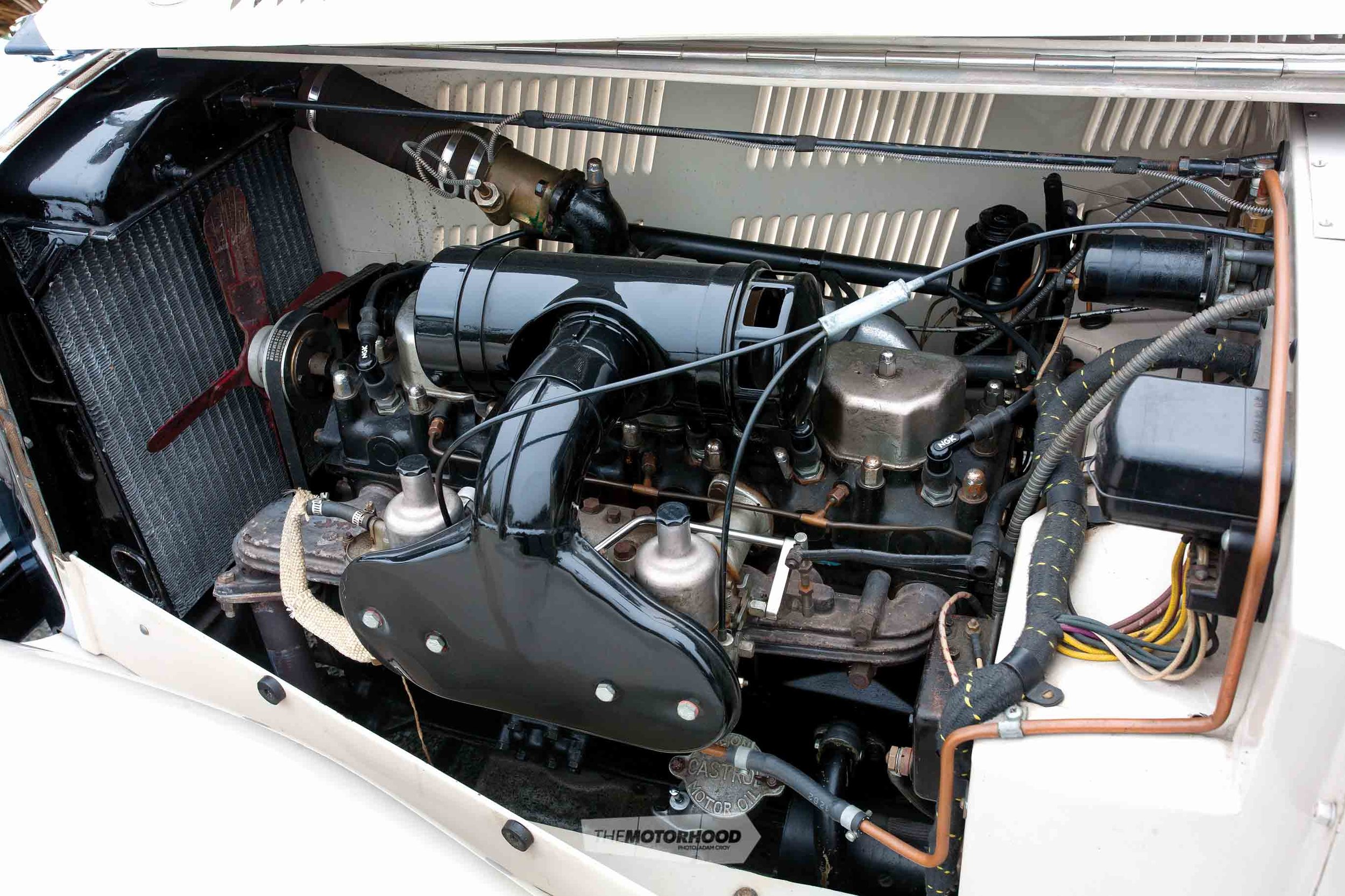
Southern Hemisphere Rarity
Philip joined the Vintage Car club a number of years ago and has had a Vehicle Identity Certificate issued by the club. His Gloria Six is an extremely rare car, and believed to one of only six vehicles left in the world with the original factory body style. As well, of course, this car is the scarcer, 1991cc six-cylinder – rather than the smaller capacity six- or four-cylinder model. Indeed, Philip’s Triumph is the only one known to exist in the southern hemisphere, whilst the remaining five cars still reside in the UK, in various states of repair. Philip is also the New Zealand area representative for the Pre-1940 Triumph Owners’ Club, now called the Pre-1940 Triumph Motor Club, the authoritative register of all pre-1940 Triumphs. The reason for the emphasis on pre-1940 Triumphs is because 1939 was the year that Triumph Motor Company ceased production of motor vehicles, just around the onset of World War II, and went into receivership – John Black’s Standard Motor Company subsequently purchasing the Triumph name in 1944.
Philip suspects the Triumph Motor Company was losing money with every car it was producing, as the cars were all handmade to a very high standard and the Gloria, which was designed by Frank Warner, was noted for its standard of craftsmanship and comprehensive equipment. It boasted the infamous Lucas Startix automatic starting system, tachometer, window washers, hydraulic brakes, free-wheel, heater, factory cut-off switch for security and a centralised lubrication system. When new, the Gloria Six cost around three times the price of an Austin Seven. Interestingly, the Gloria represented a new range of vehicles for the Triumph Motor Company in its attempt to go upmarket in about 1934. At that time, Donald Healey joined the company, and he was responsible for getting the Gloria concept into production. The Gloria was considered to be a ‘sporting car’ and Donald Healey competed in various rallies – including the Monte Carlo Rally – back in the ’30s at the wheel of a Triumph Gloria.
The Gloria’s style is reminiscent of Riley, Jaguar, Alvis and other elegant British cars of that era. Its low, under-slung chassis makes it look quite sporty as opposed to the higher, more upright and boxy-looking saloon cars of the same period. The car’s body, as mentioned earlier, is constructed from aluminium – apart from the steel front and rear guards – and is built over an ash timber frame. Philip reckons that compared to his Rover Sixteen from the same era, the Triumph is a much lighter, daintier and ‘zippier’ car to drive; without being derogatory to his Rover, Philip likens it more to driving a small truck compared to driving the Triumph.

Triumph Talk
Talking to Philip about the availability of spare parts for the Triumph Gloria, I learned that since the Triumph Motor Company had ceased production just prior the war in 1939, its Coventry-based factory was completely destroyed during the blitz and any spare parts held on the premises were destroyed also. The only glimmer of hope was to search for old stock held in Triumph dealerships, but it was highly unlikely they would have kept items such as body panels in stock. Fortunately, the Pre-1940 Triumph Motor Club has remanufactured some essential parts, such as spring shackles and water pumps to name two, so Philip has not found acquiring spare parts to be an issue – although it’s fair to say he hasn’t required too many spare parts to date. The distributor on Philip’s Triumph Gloria is a twin-point unit, which appears not to have been used on too many Triumph models. According to his Lucas parts catalogue, it is very rare indeed and the distributor cap is unique.
After spending many hours searching eBay for almost a year, Philip eventually found a new-old-stock distributor cap and, subsequently, rotors for the Gloria. Like most of us, Philip is amazed at what can be found online and, with dogged perseverance, he has been able to locate and purchase most of the spare parts he’s required. He was also able to purchase the correct radiator cap through the Pre-1940 Triumph Motor Club.
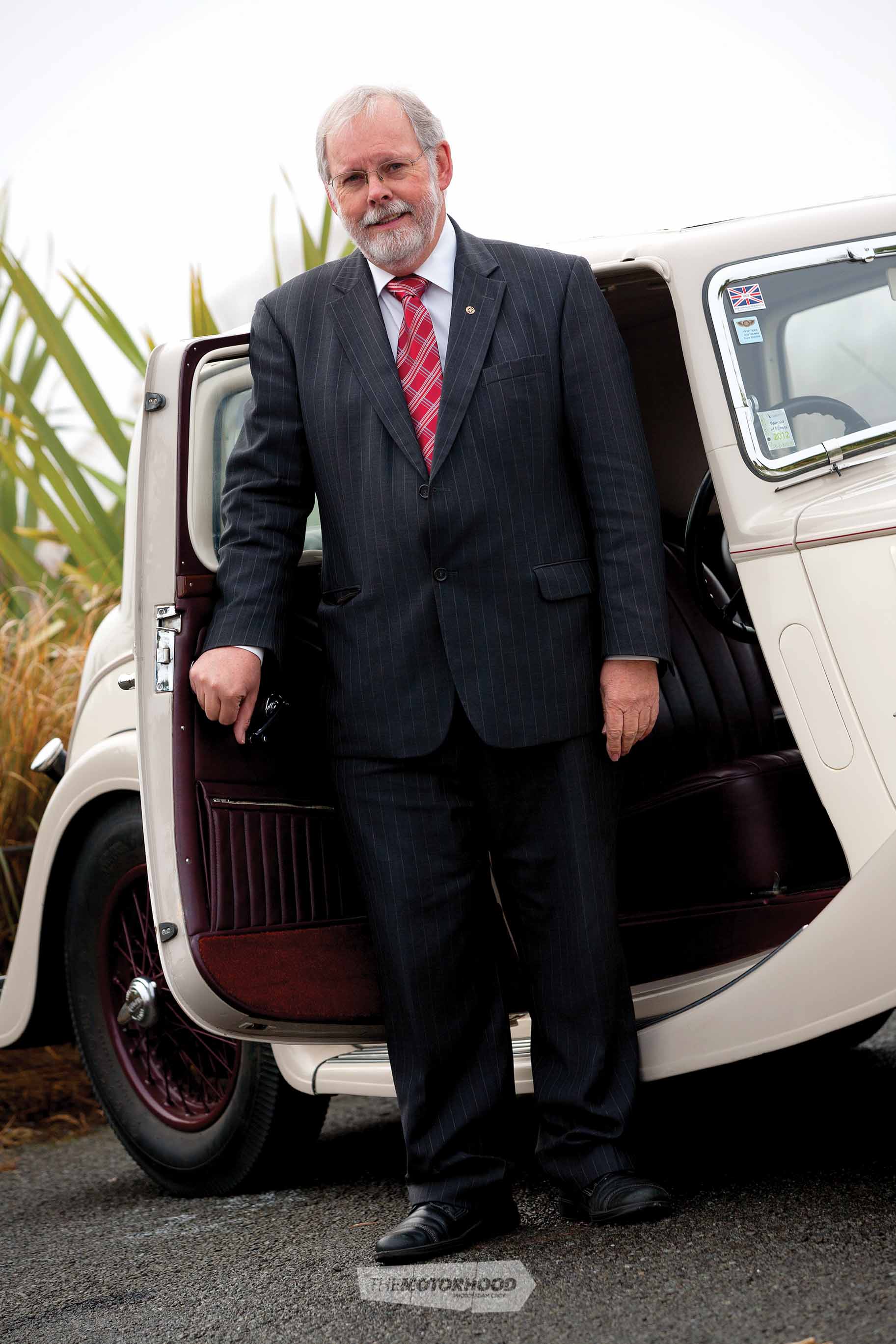
Since owning the car, Philip has made several good friends who also own pre-1940 Triumphs, and meets up with them on a regular monthly basis for a meal and a general chat and catch-up. Members of this small group also own Triumph Dolomites (which followed on from the Gloria range in the late ’30s), Triumph Scorpions and a Southern Cross (an open-top version of the Gloria). It’s not an official club as such – however, they do get together for the occasional run. Ironically, whilst chatting with one of these Triumph enthusiasts Philip discovered that he’d purchased a Renault 750 from him over 35 years ago for $200 – and that he’s still living in the same house and still a keen Renault enthusiast despite having just completed a 25-year restoration of his Triumph Dolomite.
Since owning the Triumph Gloria, Philip has participated in a number of vintage car rallies and generally puts the car into hibernation during the winter months. With the exception of this photo-shoot it has never been driven in the rain since being restored almost 20 years ago.
As I said earlier, we felt privileged to be able to catch up with Philip and learn about this beautifully restored Triumph Gloria Six, and hear of its unique provenance. This car definitely matches its description as the ‘Queen of Cars.’
This article originally appeared in NZ Classic Car magazine issue No. 266. You can purchase a print copy of the magazine at the link below:





